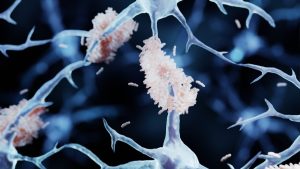Articles / For decades, mothers have borne the brunt of scrutiny for alcohol use during pregnancy − new research points to dad’s drinking as a significant factor in fetal alcohol syndrome

Yet when it comes to diagnosing babies born with birth defects associated with alcohol consumption, such as fetal alcohol syndrome, historically only the mother’s drinking habits are taken into consideration.
Research clearly shows that sperm carry a vast amount of epigenetic information – meaning heritable shifts in the way genes are expressed that don’t result from changes in the DNA sequence – that strongly influences fetal development and child health. Yet most doctors and other health care providers do not take into account the influence of paternal health and lifestyle choices on child development.
I am a developmental physiologist, and my research explores the ways that male drinking affects fetal development.
While most of the attention is given to the mom’s drinking while pregnant, my team and I focus on male drinking in the weeks and months before conception. Our studies are the first to demonstrate that male drinking before pregnancy is a plausible yet completely unexamined factor in the development of alcohol-related craniofacial abnormalities and growth deficiencies.
In 1981, the U.S. surgeon general issued a public health warning that alcohol use by women during pregnancy was the cause of physical and mental birth defects in children.
This warning came in response to growing recognition that a group of severe physical and mental impairments in children, now commonly known as fetal alcohol syndrome, were correlated with maternal alcohol use during pregnancy.
Today, doctors and scientists recognize that as many as 1 in 20 U.S. schoolchildren may exhibit some form of fetal alcohol spectrum disorders, a term referring to a wide range of alcohol-related physical, developmental and behavioral deficits, many of which cause lifelong challenges for those affected.
According to the CDC, this syndrome can occur when alcohol in the mother’s blood passes to the baby through the umbilical cord. This has led to the firmly accepted belief that alcohol-related birth defects are caused only by maternal alcohol use during pregnancy and are the woman’s fault.
The medical community reinforces this perception by requiring pediatricians to compel mothers to confirm and document their prenatal alcohol use before they can formally diagnose children with alcohol-related birth defects or neurobehavioral disorders associated with prenatal alcohol exposure. Nonetheless, there are multiple documented instances in which children diagnosed with fetal alcohol syndrome were born to mothers who denied that they consumed alcohol during pregnancy.
For example, in one study, 41 mothers denied having consumed alcohol during pregnancy despite their child receiving a diagnosis of fetal alcohol syndrome. In this circumstance and others like it over the past 40 years, the commonly accepted assumption and explanation is that these mothers lied about their alcohol use during pregnancy.
According to the CDC, there is no known safe amount of alcohol use during pregnancy or while trying to get pregnant. Despite this recommendation, alcohol use during pregnancy is widely reported.
However, reported drinking levels do not directly correlate with a child developing alcohol-related birth defects, and not all women who drink give birth to children with fetal alcohol syndrome. This contradiction has resulted in conflicting public messaging.
Although differences in how much and when pregnant women drink can contribute to the variation in how fetal alcohol syndrome develops, these factors alone cannot explain the wide range and severity of symptoms. Therefore, unknown factors beyond maternal alcohol use must contribute to this debilitating disorder.
Alcohol is a social drug, so when women drink, they often do so with their male partner. Building from this perspective, my laboratory used a mouse model to determine what happens if mom, dad or both parents drink.
Fetal alcohol syndrome is associated with three core birth defects: facial abnormalities, including small eyes and malformations in the middle of the face; reduced growth of the head and brain; and fetal growth restriction, a condition that occurs when babies are born smaller than average. Building on a previous study in humans, we used facial recognition software to study the effects of alcohol consumption on the faces of mice born to mothers, fathers or both parents who consumed alcohol before conception.
In a study published early this year, we captured a digital image of the mouse’s face. We then digitally assigned facial landmarks, including specific parts of the eyes, ears, nose and mouth. The computer program then determined if maternal, paternal or dual parental alcohol exposures changed the proportional relationships between each of these landmarks.
Our study using this mouse model revealed that chronic male alcohol exposure affects the formation of the offspring’s brain, skull and face. We also observed microcephaly, the underdevelopment of the head and brain, as well as lower birth weight, which became worse the more the male parent drank.
Therefore, our studies demonstrate that chronic male alcohol exposure – defined as consuming more than five drinks per day in a four-hour window – could drive all three of the core fetal alcohol syndrome birth defects.
Using this same mouse model, we also determined that these craniofacial changes persist into later life. Specifically, we identified abnormalities in the jaw and the size and spacing of the adult teeth. Abnormal alignment of the upper and lower teeth is another recognized symptom of fetal alcohol syndrome in humans.
Besides our research, other studies have identified behavioral changes in the offspring of male mice who regularly consume alcohol. In addition, clinical studies suggest that paternal drinking increases the risk of heart defects in people.
Our studies also support more immediate impacts of alcohol consumption on male fertility and the ability of couples to achieve a healthy pregnancy. These observations may be especially relevant for couples struggling to have children.
The CDC estimates that about 2% of all babies born in the U.S. are conceived using assisted reproductive technologies. While the focus of in-vitro fertilization treatments remains maternal health and lifestyle choices, our studies reveal that male alcohol exposure decreases the chance of becoming pregnant after undergoing IVF.
Significantly, our research showed that the more a man drinks before providing sperm, the lower the chances of his partner becoming pregnant – in some cases, by almost 50%.
Annual estimates suggest that the cumulative costs of fetal alcohol spectrum disorders to the health care and educational systems range from US$1.29 billion to $10.1 billion annually. Given these exorbitant costs and the devastating lifelong effects on affected individuals, ignoring paternal drinking habits in public health messaging overlooks a significant contributing factor.
The first published investigations into the effects of maternal exposure to toxins on birth defects in the 1950s and ’60s were met with skepticism and disbelief. Today, it is widely accepted that maternal exposures to certain drugs cause birth defects.
I fully anticipate that some within the medical and scientific communities, as well as the public, will forcefully deny that paternal drinking matters. However, until doctors start asking the father about his drinking, we will never fully know the contributions of paternal alcohol exposure to birth defects and child health.![]()
Michael Golding, Professor of Physiology, Texas A&M University
This article is republished from The Conversation under a Creative Commons license. Read the original article.
![]()

Menopausal Hormone Therapy - What Dose of Estrogen is Best?

Cardiovascular Benefits of GLP1s – New Evidence

Oral Contraceptive Pill in Teens

RSV and the Heart


Yes
No
Listen to expert interviews.
Click to open in a new tab
Browse the latest articles from Healthed.
Once you confirm you’ve read this article you can complete a Patient Case Review to earn 0.5 hours CPD in the Reviewing Performance (RP) category.
Select ‘Confirm & learn‘ when you have read this article in its entirety and you will be taken to begin your Patient Case Review.
Menopause and MHT
Multiple sclerosis vs antibody disease
Using SGLT2 to reduce cardiovascular death in T2D
Peripheral arterial disease
